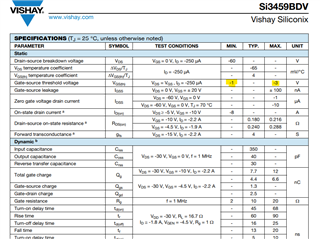Other Parts Discussed in Thread: TINA-TI
Hi! I want to select the xtr111 external mosfet Vgs ths(max) value. This value is Vgs ths(max) @ Id 2.5V 3V and 4V. Is it better for this value to be wide or to be in a narrow range? In the datasheet, it is stated that the positive supply rail of the gate can operate up to 16V.

What I'm wondering is, there is a 2.5k ohm set resistor here, 0-5V input and 0-20mA output current. The supply source is 24 V, and when approximately 1.7 volt drop occurs, 22.3V/ (20*10^-3) = 1115 ohm, taking into account the rdson resistor and 15 ohm current limiting resistors, the maximum for a 0-20 mA configuration with this 24v supply is approximately 1.1 k ohm. We can use a resistor like . In the simulation, it is seen that the gate voltage drops to 7.34Volt. How was this value created? in datasheet External vgs ths value is min 1V and max 3 Volts for this mosfet. In other words, when there is a difference of just over 3 volts between the mosfet and gate source, the gate opens completely. Even if I apply gate 18 V externally, the mosfet turns on completely. How was 7.34v created?
digikey mosfet list link(click here)



Another question I have is about the selection of input capacitance and gate capacitance. I think as these values increase, the opening time of the MOSFET changes. Is there any effect other than this?
Best Regards
Electronx





